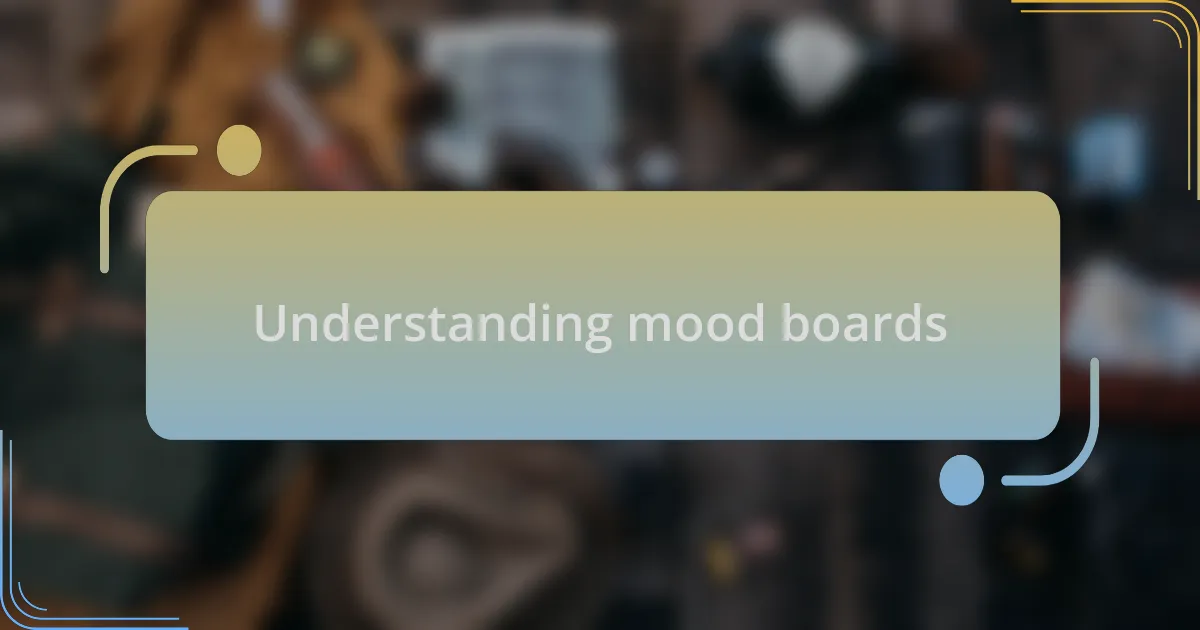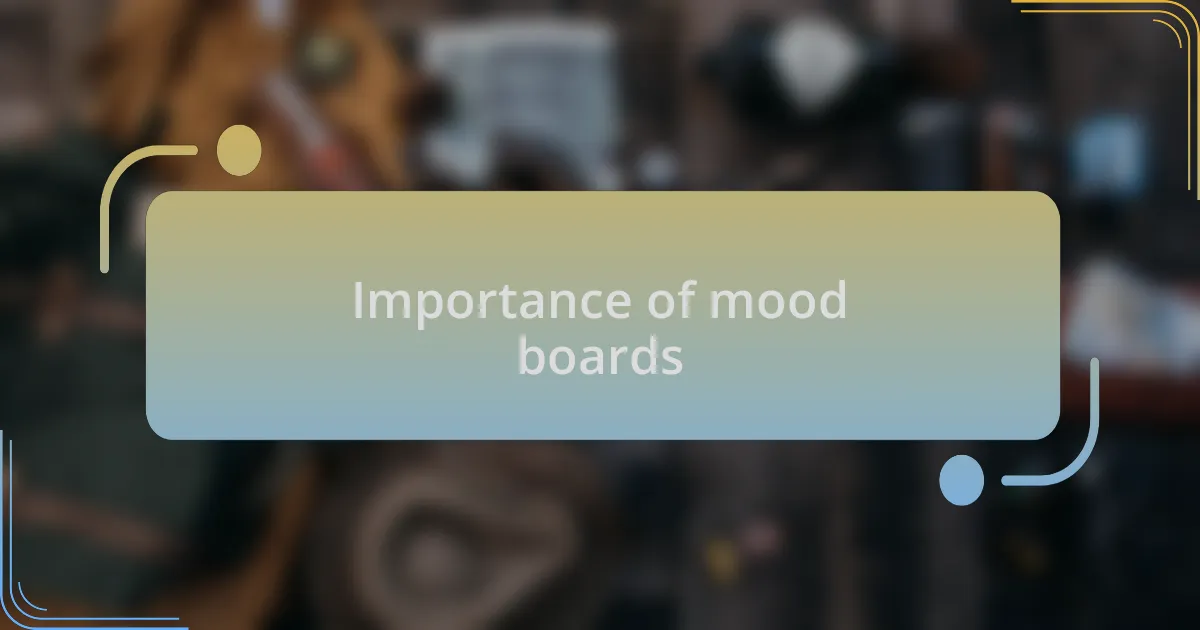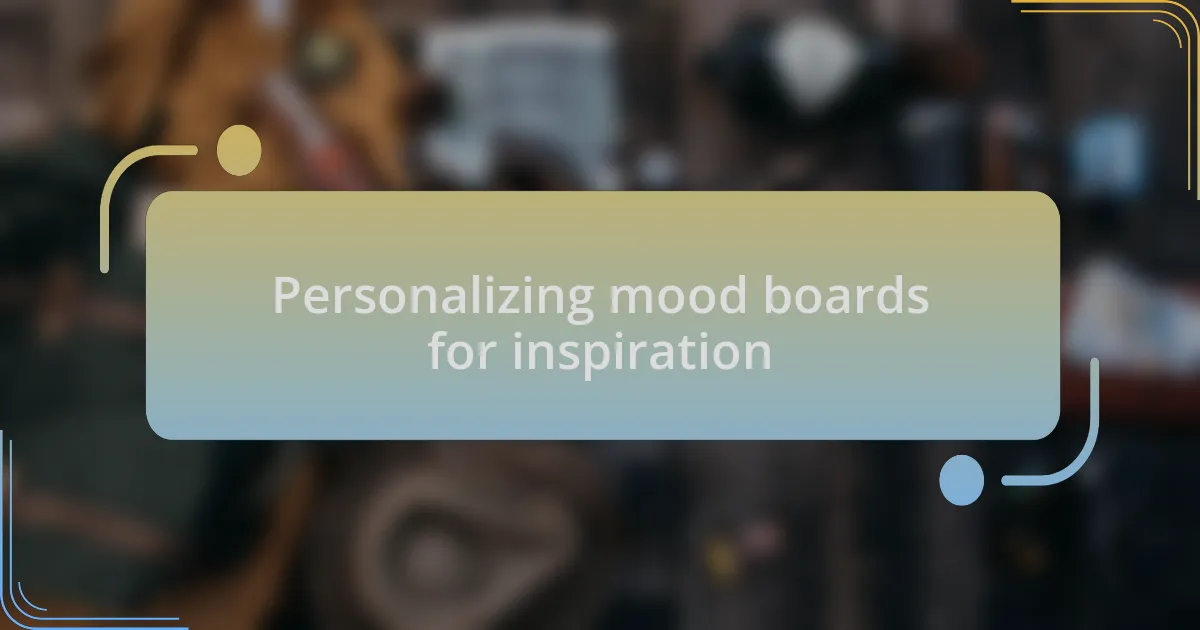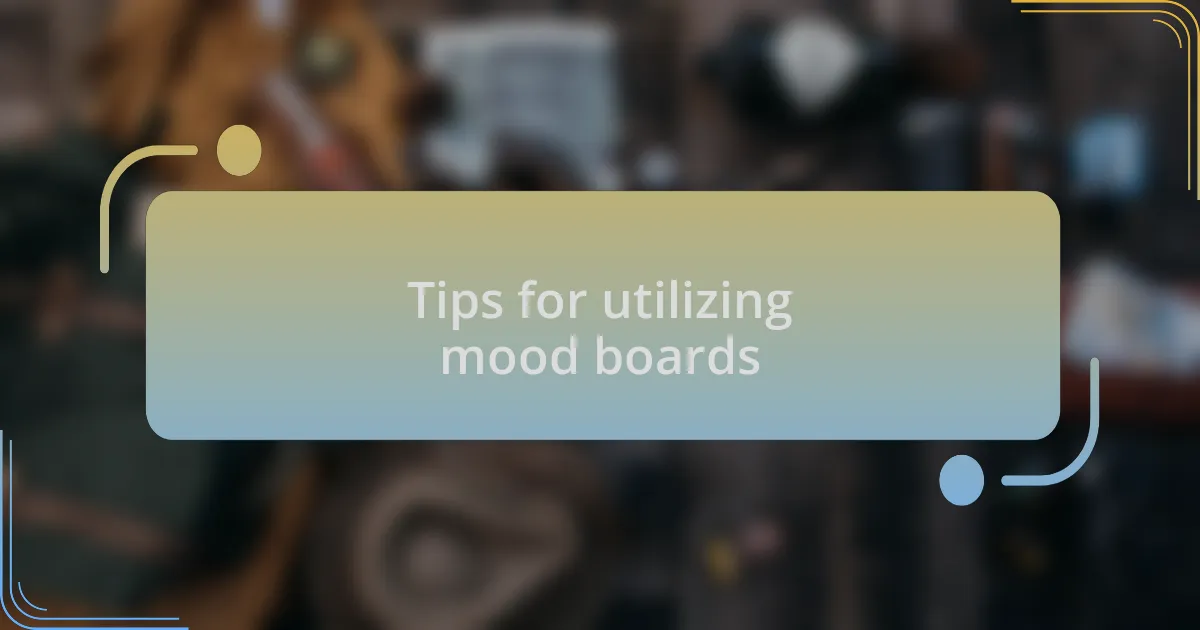Key takeaways:
- Mood boards combine images, colors, and textures to visualize and clarify creative concepts, acting as motivational tools and facilitating collaboration.
- They serve as a visual compass during production, helping teams realign with the original vision and navigate creative decisions.
- Personalization of mood boards reflects individual perspectives and can evolve throughout the creative process, enhancing emotional connections to projects.
- Effective mood boards require intentional selection of visuals, organization by categories, and periodic revisions to adapt to the project’s evolving narrative.

Understanding mood boards
Mood boards are visual collages that bring together images, colors, textures, and words to express an idea or concept. I remember the first time I created one for a project – it felt like my thoughts were spilling out into a tangible form. Have you ever felt so inspired by a collection of images that it sparked new ideas? That’s the power of a mood board.
These boards serve not just as a reference but as a source of motivation. When I’m stuck in a creative rut, revisiting my mood boards reignites that original spark. It’s fascinating how visuals can stir emotions and transport you back to that initial inspiration. Have you found that certain colors or images evoke specific feelings for you?
Moreover, mood boards facilitate collaboration by aligning everyone’s vision. I’ve worked on projects where sharing a mood board with the team helped us find common ground and recognize shared ideas. Ultimately, what can a mood board do for your vision? It can clarify direction and foster creativity, making it a vital tool for any filmmaker.

Importance of mood boards
Creating mood boards is essential in film production because they distill complex ideas into a visual format. I still remember the moment I first pinned together images for a character study; it was as if I could finally see who they were and how they fit into the story. Have you ever experienced that clarity when you visually map out your concepts? It’s incredibly empowering.
Additionally, mood boards act as a visual compass throughout the production process. In one of my projects, when the scope started to drift, I referred back to my mood board to realign the team’s focus. It reminded us of the original vision, making it easier to navigate creative decisions. Can something as simple as images really influence the course of a film? Absolutely! It’s remarkable how visuals can pull everyone back to a shared creative intention.
On a deeper level, mood boards can serve as a therapeutic outlet for filmmakers. There have been times when the stress of production felt overwhelming, and curating a board allowed me to channel that anxiety into a constructive and creative exercise. How does it feel to express your passion through color and imagery? For me, it’s an exhilarating mix of relief and excitement, reinforcing the idea that mood boards are not just practical tools but emotional lifelines in the filmmaking journey.

Personalizing mood boards for inspiration
Personalizing mood boards is an intimate process that reflects my unique perspective and creative vision. I often start by gathering images that resonate with me on a personal level, letting my tastes and experiences guide the selection. For instance, I once curated a board filled with cinematic elements from my favorite films, weaving together aesthetics that ignited my passion. Do you find that certain visuals evoke particular emotions? I do, and these elements become the heartbeat of my projects.
In creating a mood board, I strive to incorporate colors and textures that specifically evoke the mood I want to capture. I remember a film I worked on where I focused on the feeling of nostalgia; choosing muted colors and vintage images helped communicate that essence effectively. This personalization transforms the board from a mere collection of images into a vibrant narrative that speaks to the audience. Have you ever felt a particular color or texture speak to you? That connection often shapes the direction of the entire project.
I like to think of my mood board as a living entity that evolves with my creative journey. While I might start with a specific set of images, the process of adding or removing elements becomes a reflection of my developing vision. One time, I swapped out several images midway through production because they no longer felt aligned with my intentions. This adaptability is so crucial—how can we expect our stories to remain static when we are constantly evolving? Each change adds depth, making the board an authentic representation of my artistic evolution.

Tips for utilizing mood boards
Utilizing mood boards effectively starts with being intentional about the visuals you choose. I remember a time when I spent hours sifting through images only to realize I was drawn to elements that didn’t truly represent my vision. It was a lesson in clarity for me—how can you convey a message without first understanding what that message is? Starting with a clear theme or feeling can streamline the process and keep the board focused.
In my experience, organizing your mood board by categories or sections can enhance its impact. For instance, I once divided a board into three parts: color palettes, textures, and key imagery. This not only clarified my ideas but also made it easier to identify what elements were missing. Does anyone else find that seeing things grouped together helps spark new ideas? It’s all about creating a visual toolbox that you can pull from as your project evolves.
Lastly, don’t be afraid to revisit your mood board periodically. As I continue through the production stages, I often find myself re-evaluating. I once added a completely new set of images halfway through filming that suddenly aligned with the emerging narrative. It’s like telling your story in real-time; can you imagine how different our projects could be if we allow them to breathe and shift? Embracing this fluidity can lead to innovative ideas and unexpected inspiration.